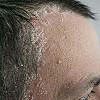Harvard Health Blog
Cervical cancer screening update: Not your mother’s Pap smear

Confused about when to get your next Pap test? Anxious because your doctor said you don’t need another Pap for five years? Well, you are not alone.
For several decades, getting a yearly Pap test has been the standard for cervical cancer screening. Cervical cancer, which still kills about 4,000 women annually in the United States, is really a preventable disease. The goal of cervical cancer screening is to detect areas of significant precancerous cells in the cervix (cervical dysplasia) and treat them before they become invasive cervical cancer. Early detection is key and for a long time the Pap test — which looks for abnormal cells — was the only tool available to screen for cervical cancer. Women were encouraged to get one yearly.
Then along came the discovery that HPV or human papilloma virus plays a key role in the development of cervical cancer. Researchers have studied the biology of HPV and cervical dysplasia. We now know that certain strains of HPV increase the risk of developing cervical cancer. And we also have a good understanding of how long it takes for some types of cervical dysplasia to become cervical cancer. Based on this new knowledge, experts concluded that women were being over screened with annual Pap smears and overtreated for abnormal cells that were unlikely to ever become cervical cancer. Doctors started testing for high-risk strains of HPV, and new screening guidelines reflect this knowledge. The current recommendations for cervical cancer screening in average-risk women in the United States include:
- start screening at age 21
- stop screening at age 65 (in low-risk women with no prior history of severe dysplasia)
- women age 21-30: Pap test (cytology) every three years
- women age 30-65: Pap test (cytology) every three years, FDA-approved primary hrHPV testing every five years, or co-testing (Pap and HPV) every five years.
New and better screening techniques thanks to HPV testing
Now newer research supports the belief that a woman’s HPV status is the strongest predictor of her risk for cervical cancer. Randomized control trials have shown that screening using HPV testing alone or in combination with a Pap test allows for earlier detection of severe dysplasia and offers better protection against cervical cancer than a Pap test alone.
In recent years, home testing for HPV has become an option, but it is not yet endorsed by the American College of Obstetricians and Gynecologists. Therefore, it is strongly recommended that you have an in-office speculum exam to obtain the best sample.
When you go for your next cervical cancer screening, it’s important to know that the test being done for HPV on your sample is one that is FDA approved.
One thing is for sure, gone for good are the days of the annual Pap test. As hard as it may be to let go of old habits, there is good science to support these changes. But remember, it is still important to see your primary care provider or gynecologist at least once every couple years for a wellness visit, because there is more to your visits than just screening for cervical cancer.
Image: monkeybusinessimages/Getty Images
About the Author

Andrea Chisholm, MD, Contributor
Disclaimer:
As a service to our readers, Harvard Health Publishing provides access to our library of archived content. Please note the date of last review or update on all articles.
No content on this site, regardless of date, should ever be used as a substitute for direct medical advice from your doctor or other qualified clinician.
















